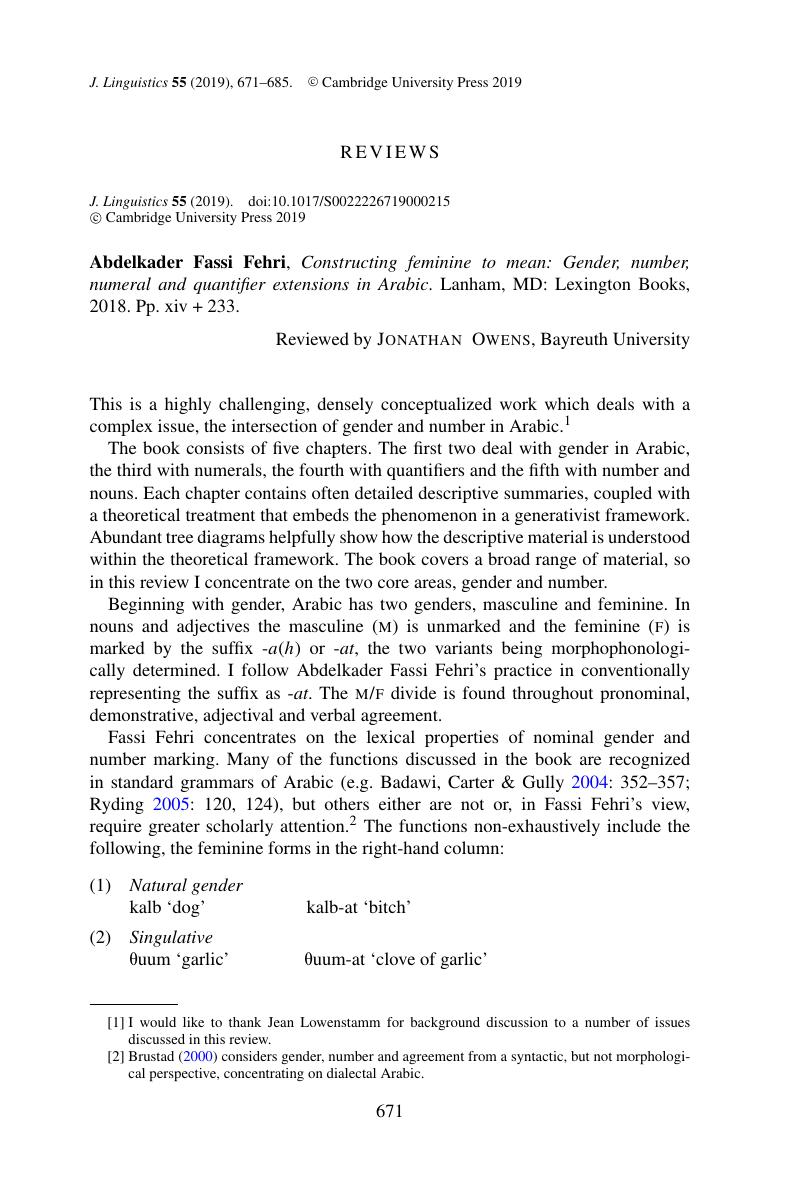No CrossRef data available.
Article contents
Abdelkader Fassi Fehri, Constructing feminine to mean: Gender, number, numeral and quantifier extensions in Arabic. Lanham, MD: Lexington Books, 2018. Pp. xiv + 233.
Published online by Cambridge University Press: 04 July 2019
Abstract
An abstract is not available for this content so a preview has been provided. Please use the Get access link above for information on how to access this content.

- Type
- Reviews
- Information
- Copyright
- Copyright © Cambridge University Press 2019
References
Badawi, Elsaid, Carter, Michael G. & Gully, Adrian. 2004. Modern written Arabic: A comprehensive grammar. London: Routledge.Google Scholar
Brustad, Kristen E.
2000. The syntax of spoken Arabic: A comparative study of Moroccan, Egyptian, Syrian, and Kuwaiti dialects. Washington, DC: Georgetown University Press.Google Scholar
Ryding, Karin. 2005. A reference grammar of Modern Standard Arabic. Cambridge: Cambridge University Press.Google Scholar
Sibawaih, Ibn Qanbar. Al-Kitaab, 5 vols. Edited by Hartwig Derenbourg, 1970, Hildesheim: Olms.Google Scholar
Tsegaye, Mulugeta, Mous, Maarten & Schiller, Niels. 2014. Plural as a value of Cushitic gender: Evidence from gender congruency effect experiments in Konso (Cushitic). In Corbett, Greville G. (ed.), The expression of gender, 191–214. Berlin: de Gruyter.Google Scholar
Werbeck, Wolfgang. 2001. Laut- und Formenlehre des nordjemenitisch-arabischen Dialekts von Manā
 $\underset{\displaystyle \breve{~}}{h}$
a. Münster: Rhema.Google Scholar
$\underset{\displaystyle \breve{~}}{h}$
a. Münster: Rhema.Google Scholar


